How to Calculate Total Assets: Definition & Examples

Calculating total assets lets small business owners know if they’re able to repay their debts. It also gives a snapshot of the overall financial health of the business.
A potential lender will also want to know the value of a business’s assets as they can be used as leverage (a guarantee) to get a new loan, according to the Houston Chronicle.
In this article we’ll cover:
1. List Your Assets
To calculate your business’s total assets, you first need to know what assets you have.
Assets are any resources of financial value to a business.
Start by listing the value of any current assets (assets that can easily be converted to cash) like cash, money owed to you and inventory.
Then move on to listing the value of fixed assets (assets that are harder to convert into cash) like buildings and machinery. Find the value of long-term investments like stocks and bonds, too.
Finally, calculate the value of intangible assets—non-physical assets of financial value like a business’s reputation. This article has more information on intangible assets and how to calculate them.

Here are common assets in small business:
- Cash
- Accounts receivable (money owing)
- Customer deposits
- Office furniture and equipment
- Cell phones
- Computer hardware and software
- Tools, machinery, and equipment
- Vehicles
- Real estate (buildings etc.)
- Lease agreements and money spent to improve a leased space
- Inventory
- Investments that mature in less than 90 days (i.e. stocks, U.S. treasuries, bonds, mutual funds)
- Pre-paid insurance
- Intellectual property (i.e. know-how)
- Brand equity (recognition)
- Company reputation
- Copyright
- Trademarks
- Patents
- Franchises
- Licensing agreements
- Domain name
- Employment contracts
- Customer lists
- Client relationships
A complete list of assets can be found in this article.
2. Make a Balance Sheet
A balance sheet is an important financial statement that shows a company’s assets, as well as its liabilities and equity (net worth). If you’re unsure of what is a balance sheet you can watch this video for more information.
Making a balance sheet will help you calculate your assets.
New to business? You can draw up a balance sheet quickly in Excel. Below is an example of a balance sheet created in Excel:
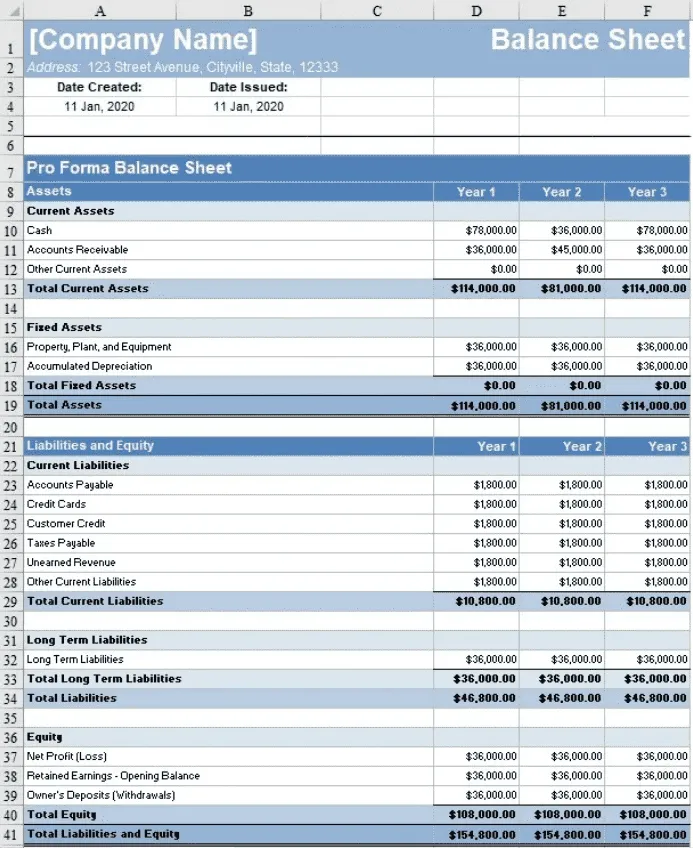
Source: FreshBooks
Make your own balance sheet in Excel by downloading a Free Balance Sheet Template from FreshBooks.
Take the assets you listed in step one and plug them into the template, making sure to group them into categories like current assets, fixed assets and other assets.
A note: a balance sheet is a snapshot of a certain accounting period, whether that’s the past financial year, quarter or month. But, make sure you include the value of all assets, even long-term assets.
It’s generally simpler and more accurate to use accounting software to generate a balance sheet. Below is a balance sheet generated using FreshBooks. Some assets will be added automatically thanks to your journal entries. Others will have to be entered manually.

Source: FreshBooks
3. Add up Your Assets
Accounting software will automatically add up all your assets for you to find the final amount (total assets).
Otherwise, you will need to manually add up your assets if you’re using a template in, say, Excel. This free assets calculator will help you do just that.
For example, a general contractor has $5000 in cash in his business bank account.
He also hasn’t billed $3000 for an ongoing job (the contract is worth $5000 and he’s already billed for $2000). He also has another contract lined up for a job worth $2000. He has equipment worth $1000 and investments worth $2000.
- $5000 + $3000 + $2000 + $1000 + $2000 = $13,000 total assets
4. Check the Basic Accounting Formula
In double-entry bookkeeping, there is an accounting formula used to check the financial health of a business. It can also be used to check if your total assets figure is correct, according to The Balance.
The formula is:
Total Liabilities + Equity = Total Assets
Equity is the net worth of a company (also known as capital). A liability is what a business owes, such as business loans, taxes owing or operating expenses.
According to the above formula, your total liabilities plus equity must equal total assets. If the amounts on both sides of the equation are the same, then your total assets figure is correct.
You can do this manually by filling out the liabilities and equity in your balance sheet. Or accounting software can do the work for you.
This article shows you how to calculate liabilities.
If the equation doesn’t work, you need to double check your figures.
In the below example, assets equal $18,724.26. Liabilities plus equity also equals $18,724.26. Total assets must be correct because the equation balances.

Source: FreshBooks
People also ask:
- What Is the Formula for Assets?
- What Is Included in Total Assets?
- How Do You Calculate Return on Assets?
What Is the Formula for Assets?
The formula used to calculate total assets is:
Total Liabilities + Equity = Total Assets
The above section demonstrates how to use this formula to find total assets.

Debt to Asset Ratio
The debt to asset ratio is another important formula for assets. This ratio shows how much of a company’s assets were purchased with borrowed money. For example, a new business laptop could be paid for using a line of credit.
The ratio is calculated as a percentage. A higher percentage means more of your assets are financed through debt, which could be problematic. The company is at higher risk of bankruptcy or insolvency (unable to pay its debts), according to The Balance.
- For example, a small business has a debt to asset ratio of 45 percent. This means that 45 percent of every dollar of its assets is financed by borrowed money.
To calculate this ratio, use this formula:
Total Liabilities / Total Assets = Debt to Assets Ratio
For example, a small business has total liabilities of $1000 and total assets of $2000.
- $1000 / $2000 = 0.5 or 50 percent
Confused about making these calculations? This free debt to asset ratio calculator will help you get the job done.
What Is Included in Total Assets?
The meaning of total assets is all the assets, or items of value, a small business owns. Included in total assets is cash, accounts receivable (money owing to you), inventory, equipment, tools etc. Step one above lists common assets for small businesses.
The value of all of a company’s assets is added together to find total assets.
To calculate total assets on a balance sheet, plug in your assets first. Usually assets are divided into categories such as current or fixed assets—which are assets that are easy to convert into cash (inventory) versus assets that are harder to convert into cash (buildings). Then add up all the assets’ value to get total assets.
Accounting software makes this easy as it calculates total assets for you.
How Do You Calculate Return on Assets?
The return on assets (ROA) formula tells a business owner how much profit is generated after tax for each dollar of assets. In other words, the calculation shows the relation of net earnings to total resources available, according to The Balance.
A strong ROA depends on the industry and a little research is needed to find out if your ROA is good or not.
There are two ways to calculate ROA:
- Net Profit Margin x Asset Turnover = Return on Assets
- Net Income / Average Assets in a Period of Time = Return on Assets
The second method is simpler and we will focus on it here.
- For example, a company has a net income of $100,000. The average assets are worth $500,000.
- 100,000 / $500,000 = 0.2 or 2 percent
To find average assets, find the average for the period of time you’re looking at, whether a year, quarter or month.
- For example, to find average assets over a year, add the total assets for the past year with the total assets for the year before that and divide that number by two.
- ($5000 + $6000) / 2 = $5500 annual average assets
Are you looking for more business advice on everything from starting a new business to new business practices?
Then check out the FreshBooks Resource Hub.
RELATED ARTICLES


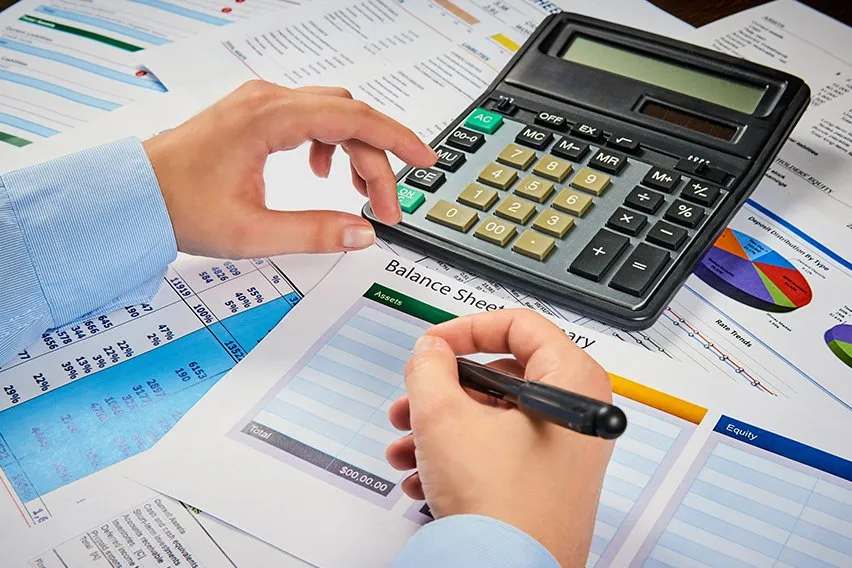 Forecasting a Balance Sheet | The Small Business Guide to Financial Forecasts
Forecasting a Balance Sheet | The Small Business Guide to Financial Forecasts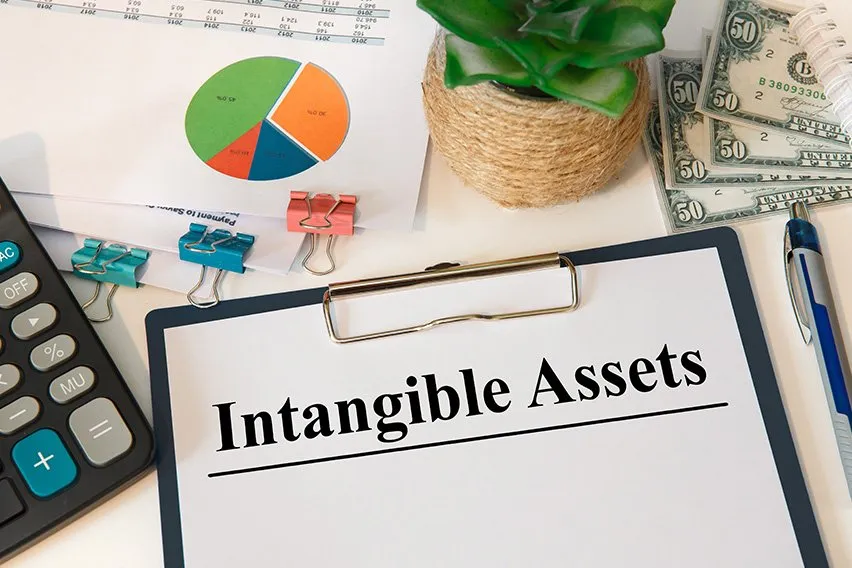 What Is an Intangible Asset? A Simple Definition for Small Business (With Examples)
What Is an Intangible Asset? A Simple Definition for Small Business (With Examples)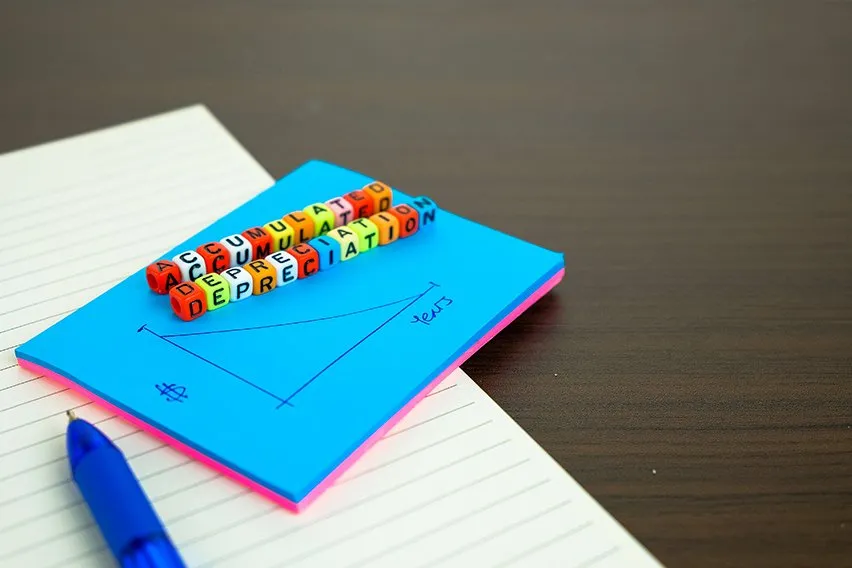 What Is Straight Line Depreciation?
What Is Straight Line Depreciation?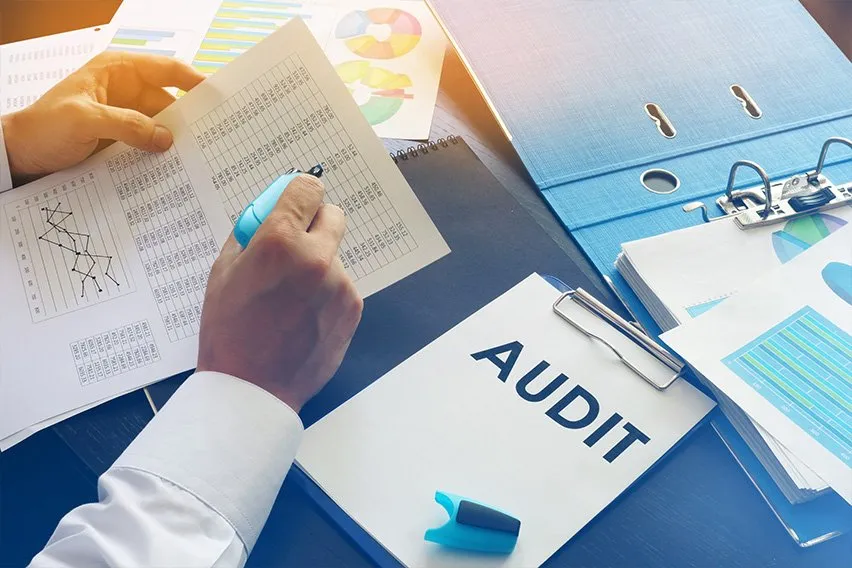 Auditing: Definition, Types, and Importance
Auditing: Definition, Types, and Importance What Is Depreciation: Definition, Types, and Calculation
What Is Depreciation: Definition, Types, and Calculation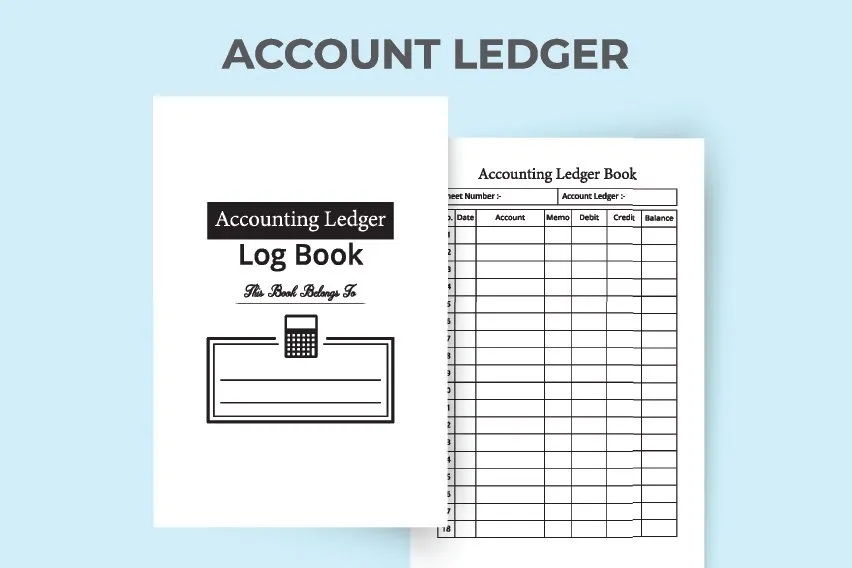 Ledger in accounting: Process, example & free template
Ledger in accounting: Process, example & free template